Shearwall Core Reinforcements
Shearwall core reinforcement design results and inadequacy of shearwall cores (polygonal shearwalls) are displayed in the Shearwall Core Reinforcements dialog. In the shearwall core reinforcement dialog, transverse and longitudinal reinforcements of the shearwalls, head zone reinforcements, internal forces calculated as a result of the analysis, increased internal forces related to TBDY, and capacity ratio results are given. The body and head area reinforcements of the shearwall core arms are changed and fixed in the Shearwall Core Reinforcements dialog.
Location of the Shearwall Core Reinforcement Dialog
After analysis, you can access it by clicking on the Shearwall Core Reinforcements command under the Concrete Design title in the ribbon menu Analysis and Design tab .
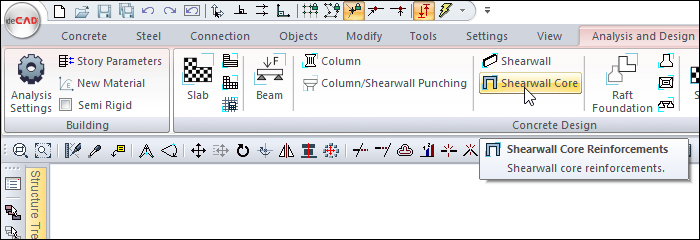
General Specifications of Shearwall Core Reinforcements Dialogue
Summary Information The summary information about the line where the cursor is located is given in the form of Story Name, in the name section of the dialog.  For example PG1 - P01 / BASEMENT 1 |
Using the Shift key In this tab, you can select more than one row with the Shift key, enter a value by double-clicking any cell whose value is open to change, and you can make that value apply to all selected rows. |
Using the Ctrl key Ctrl key, on the other hand, selects the lines in between one by one. |
All Stories  It lists the slabs on the screen throughout the entire story. |
Previous  The cursor moves to the previous line. |
Next  The cursor goes to the next line. |
Ok  It saves the changes made and closes the dialog. |
Cancel  Closes the dialog without saving the changes made. |
Insufficiency Code Description and Recommended Solution
Insufficiency Code | Description |
|---|---|
K | Shear safety is not satisfied. |
F | Friction-based shear capacity is not satisfied. Solutions: Increase longitudinal reinforcement; enlarge wall cross-sectional dimensions; improve confinement detailing. |
E | The maximum axial load capacity is exceeded. Solutions: Increase wall dimensions; use higher-strength concrete; reduce applied axial loads through structural redesign. |
M | The maximum reinforcement ratio is exceeded. |
ab | The hook development length is not satisfied as per the seismic design code. |
As(-) | The provided longitudinal reinforcement is insufficient. |
Z | Punching shear capacity is exceeded (typically in slab-wall connections). |
R | The capacity ratio under axial load and biaxial bending exceeds 1.0. |
Shearwall Cores Tab
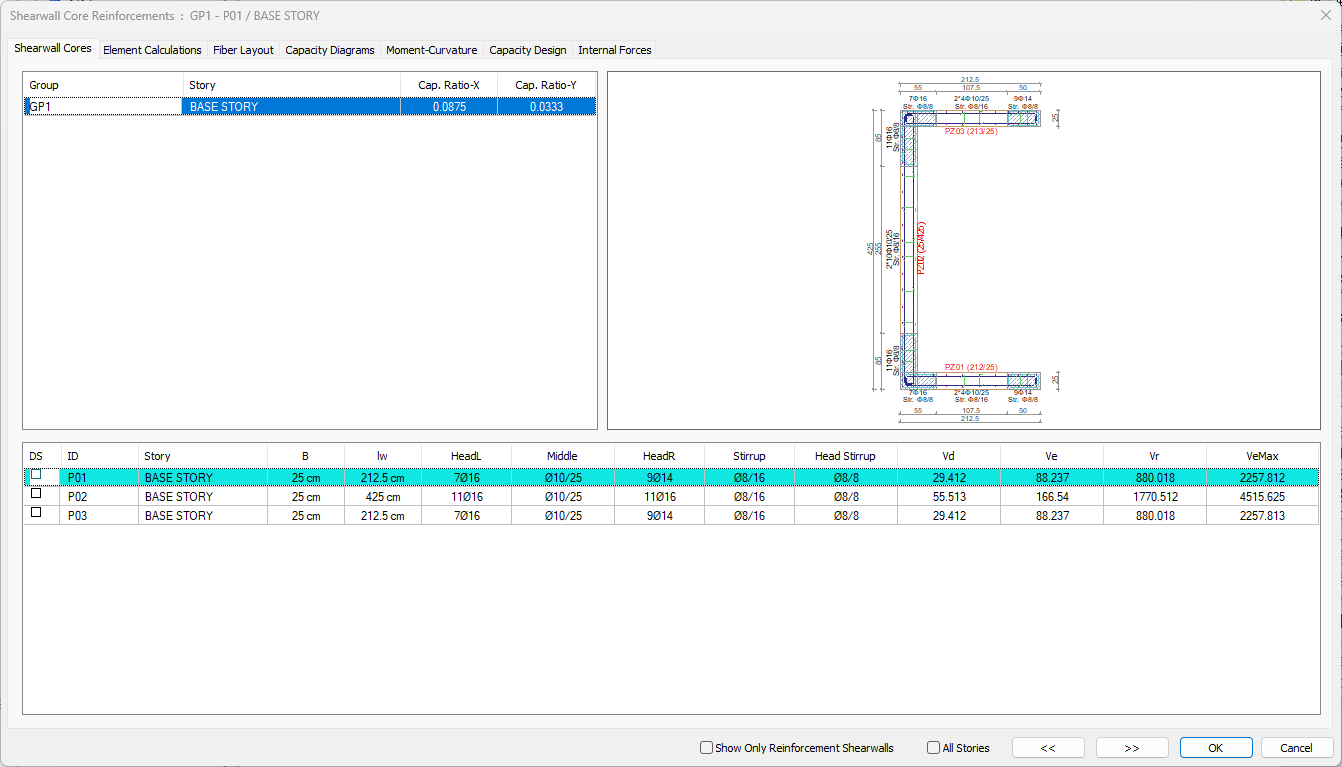
Specifications |
|---|
Group - Story list  The name and location of the shearwall group is listed. |
Shearwall core drawing 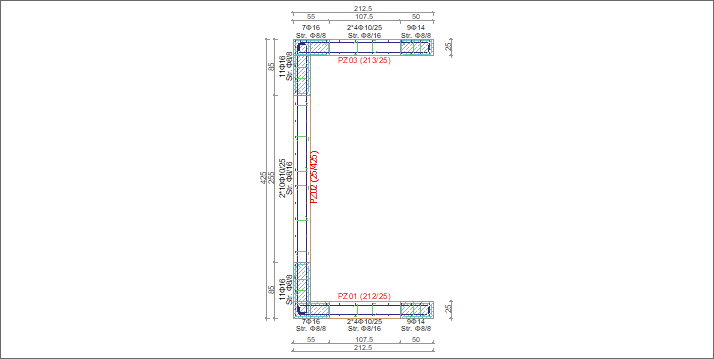 |
DS  If marked, the rebar is fixed. When the shearwall rebar is changed, DS is automatically marked and when concrete is made, the shearwall rebar also remains constant. If DS is not marked, when concrete is made, shearwall rebar is determined again according to rebar selection conditions. |
ID  It is the name of the shearwall in the plan. (P1, P101, P10 etc.) In case of negativity, a term related to negativity is added next to the name. Like P101 (E). |
Story  It indicates the story where the shearwall core is located. |
B  It is the width of the shearwall. |
lw  It is the length of the shearwall. |
HeadL  It is the value of the rebar in the left region in terms of quantity and diameter. |
Middle  It is the value of the rebar in the middle region in terms of quantity and diameter. The shearwall mesh reinforced shearwall is written as the mesh rebar type in the cell. |
HeadR  It is the value of the right area rebar in terms of quantity and diameter. |
Str.  It is the diameter and spacing of the stirrup of the shearwall body region. |
Head Stirrup  It is the diameter and spacing of the stirrup of the shearwall heading area. |
Vd  It is the shear force calculated under the combined effect of vertical loads and earthquake loads. |
Ve  It is the design shear force calculated according to TBDY 7.6.6 and based on the shear transverse reinforcement calculation. |
Vr  Shearwall shear design strength. |
VeMax  It is the maximum shear force that the shearwall can take, calculated according to TBDY Equation 7.18. |
Element Calculations Tab

Specifications |
|---|
Geometric properties  hw: It is the total high value of the shearwall throughout the structure. lw: It is the length value of the shearwall in plan. |
Material characteristics  Structural material: The structural material of the column. |
hw  It is the total high value of the shearwall throughout the structure. |
lw  It is the length value of the shearwall in plan. |
Mp (t)  It is the hardening moment capacity value calculated at the base section of the shearwall. |
Md (t)  It is the moment value calculated under the combined effect of vertical loads and earthquake loads multiplied by the load coefficients calculated at the base section of the shearwall. |
Ve  Detailed information on shear force control according to TDY is printed. For shearwall with high ductility level Hw / Lw> 2; |
Ve cap value  The shear force obtained by magnifying the shear force calculated from the earthquake with vertical loads by 1.2D or 1.4D times. |
Vr  It is the shear strength value of the shearwall section. |
4.3.4.9 factor  For shearwall with high ductility level with Hw / Lw <= 2; |
VeMax  It is the maximum shear force that the shearwall can take, calculated according to TBDY Equation 7.18. |
Fiber Layout Tab
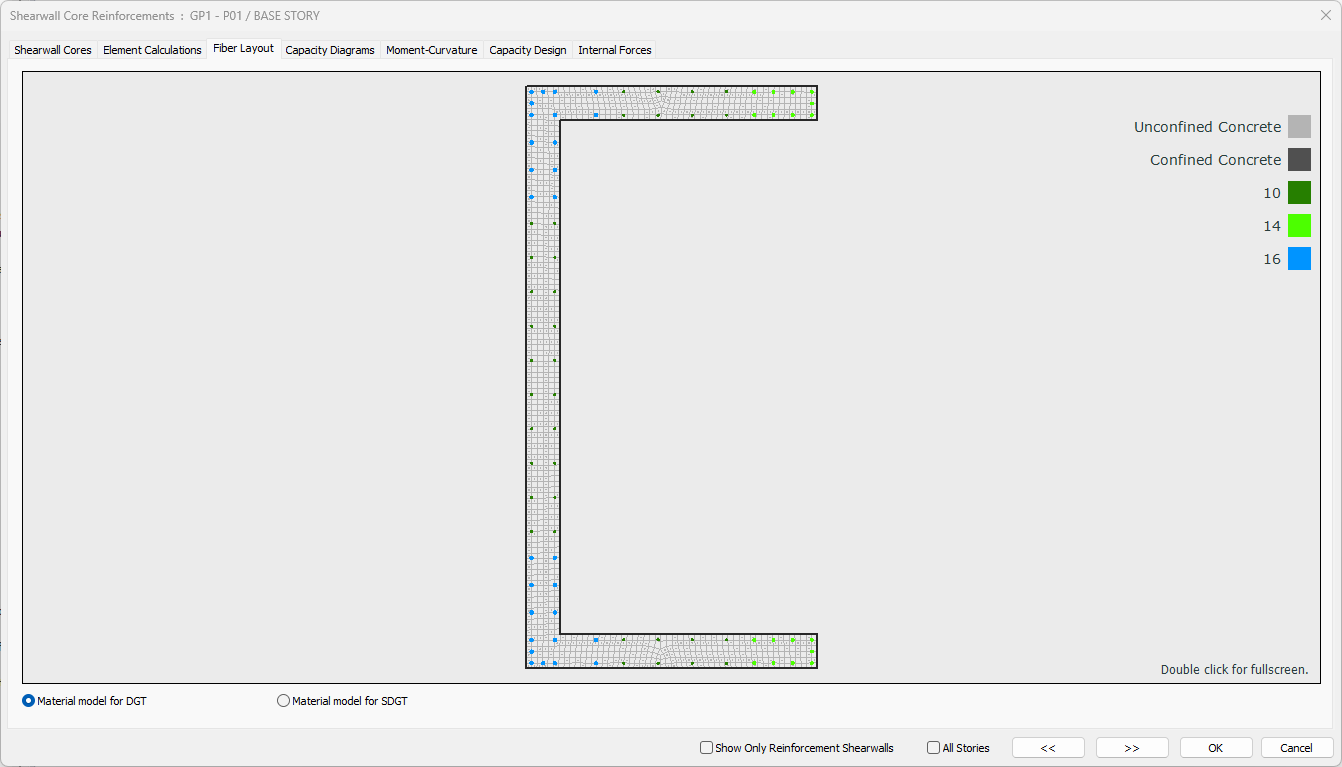
Specifications |
|---|
Preview and legend 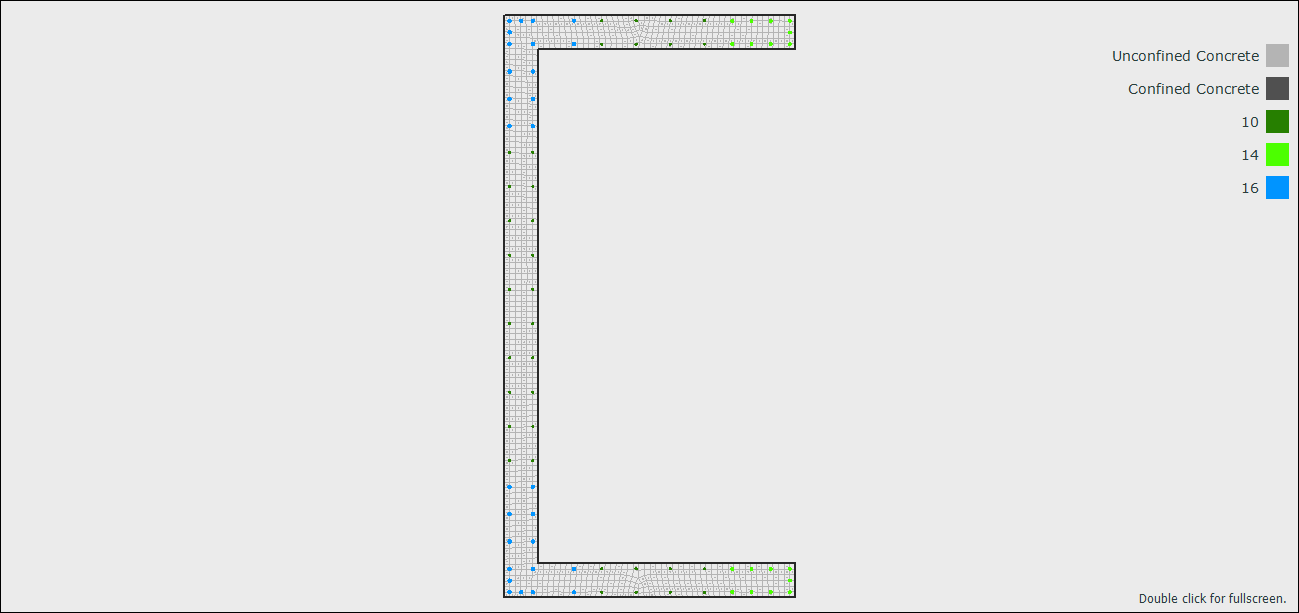 The fiber layout preview and what the colors mean are shown. |
Material model for DGT  Section cells and rebars are displayed according to the concrete and rebar material model criteria defined in TS500. |
Material model for SDGT  The section cells and rebars are displayed according to the ŞGDT criteria for the concrete and rebar material model defined in TBDY. |
Capacity Diagrams Tab
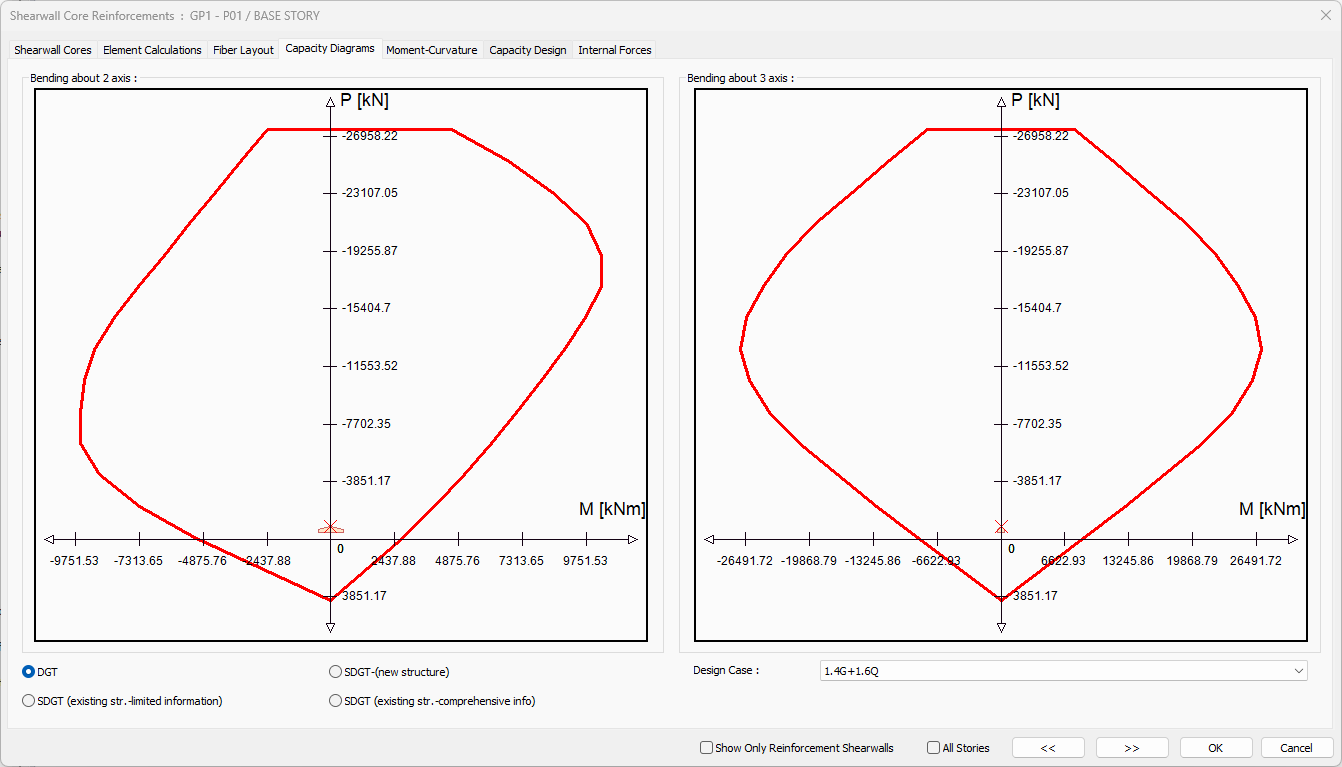
Specifications |
|---|
Bending about 2 axis 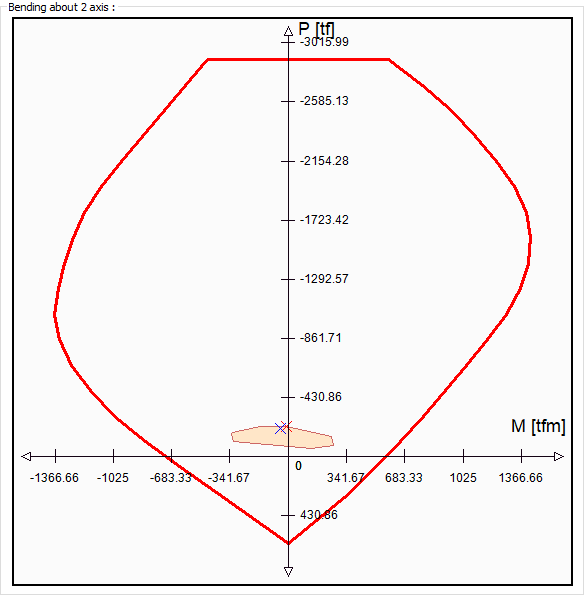 |
Bending about 3 axis 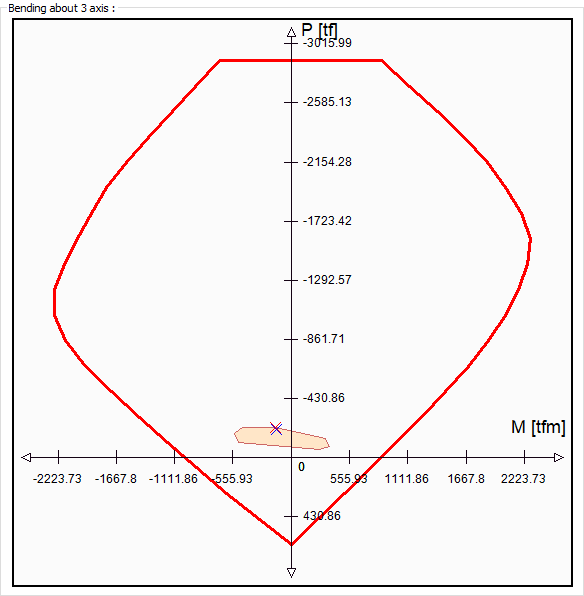 |
Material model for DGT  Section cells and rebars are displayed according to the concrete and rebar material model criteria defined in TS500. |
SDGT - (new structure)  The section cells and rebars are displayed according to the ŞGDT (new structure) criteria for the concrete and rebar material model defined in TBDY. |
SDGT - (existing str. - limited information)  The section cells and rebars are displayed according to the ŞGDT (existing structure - limited information) criteria for the concrete and rebar material model defined in TBDY. |
SDGT - (existing str. - comprehensive info)  The section cells and rebars are displayed according to the ŞGDT (existing structure - comprehensive information) criteria for the concrete and rebar material model defined in TBDY. |
Design case  The combination for the capacity diagrams to be examined can be selected from the list. |
Moment - Curvature Tab

Specifications |
|---|
Schematic drawing 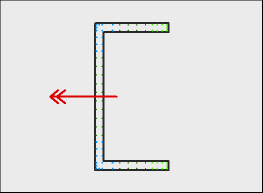 |
Moment - curvature diagram 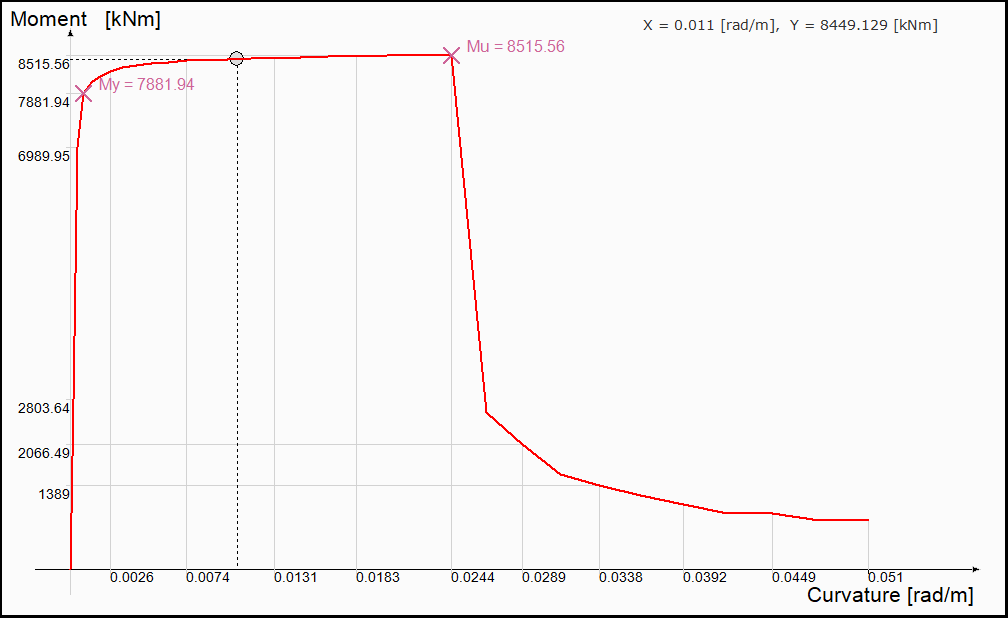 |
Use CP curvature = ultimate curvature  When this option is selected, the ultimate strain of the concrete and reinforcement material is used to calculate the plastic rotation limit values for performance levels. |
Caltrans idealize model  If marked, the moment-curvature plot is idealized. It is a moment curvature relationship obtained by drawing a horizontal line that intersects with an inclined line passing over the moment of yield and will equalize the areas between the moment curvature graph. |
Stop when a fiber reaches ultimate stress  If checked, the graphic ends when the graphic fiber reaches its highest stress. |
DGT  Section cells and rebars are displayed according to the concrete and rebar material model criteria defined in TS500. |
SGDT  The section cells and rebars are displayed according to the SGDT criteria for the concrete and rebar material model defined in TBDY. |
Point count  It is used to determine how many points the moment curvature graph consists of. |
Angle  It shows the neutral axis angle from which the moment curvature relationship is obtained. It is indicated with a red arrow in the image above. |
Axial force  It shows under which axial force the moment curvature relationship is drawn. |
Compression limit  The determined material model is the largest axial pressure force that the section can take in the moment-normal force interaction. |
Tension limit  The determined material model is the largest axial tensile force that the section can take in the moment-normal force interaction. |
View stress/strain contours  It shows the stress and strain state in section in color format at each step of the moment curvature relationship. |
Generate report  Creates a detailed report of moment-curvature. |
Capacity Design Tab
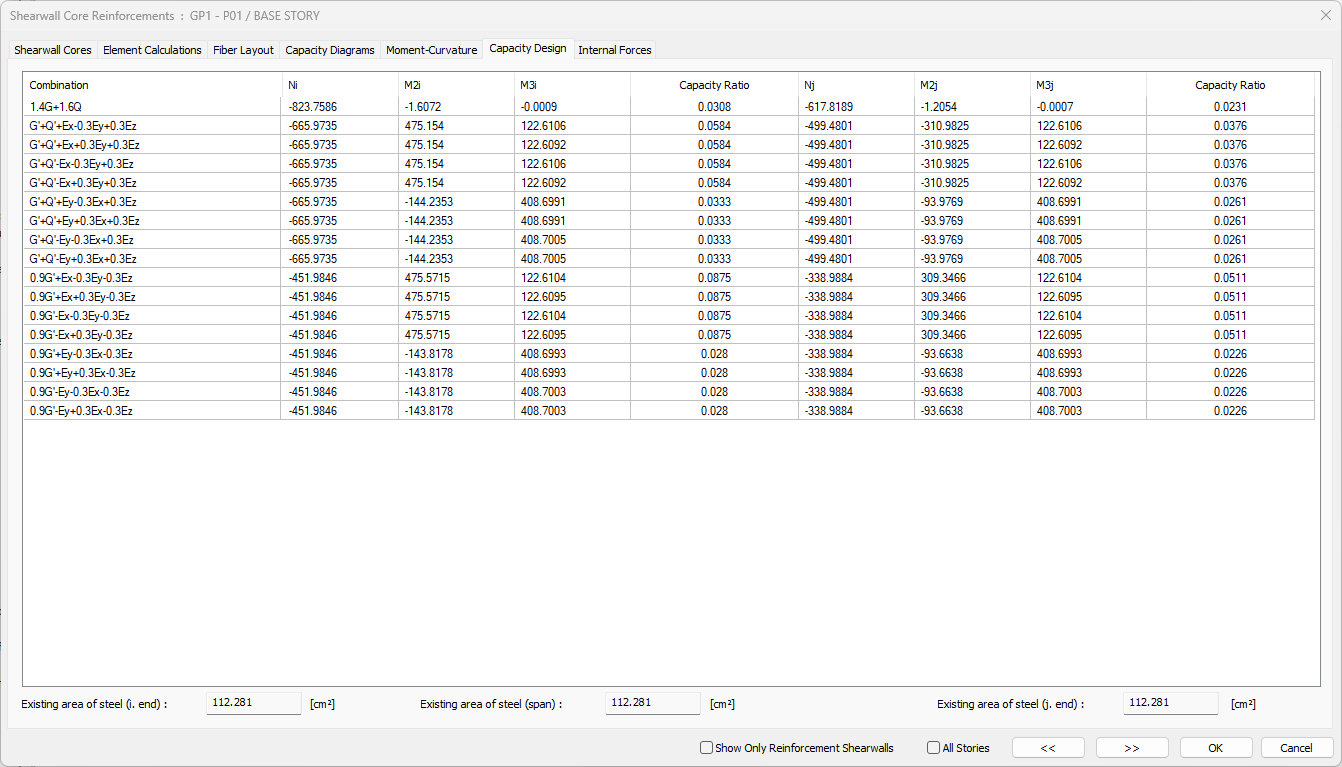
Specifications |
|---|
Capacity chart  Combination: The corresponding combination is shown. |
Existing area of steel  The available rebar area values for end i, span, and end j are shown. |
Internal Forces Tab
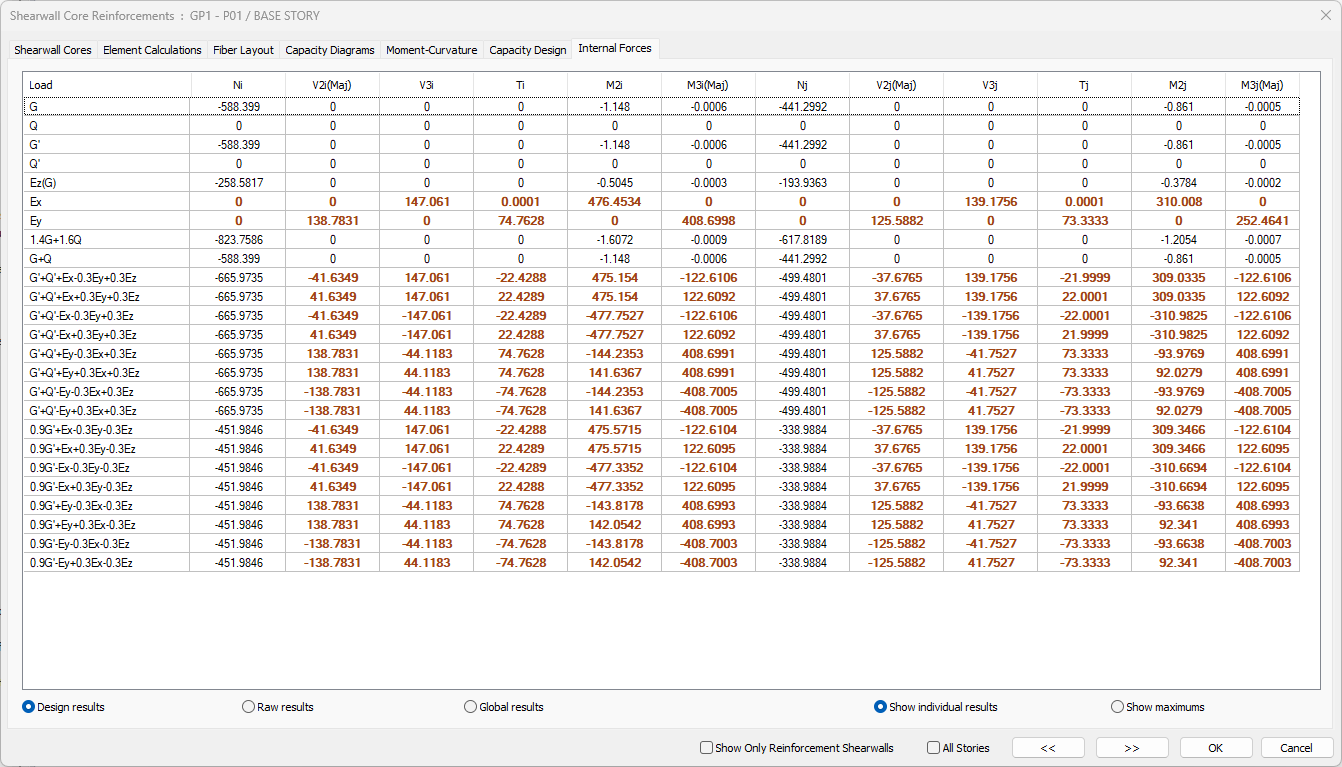
Specifications |
|---|
Table of forces 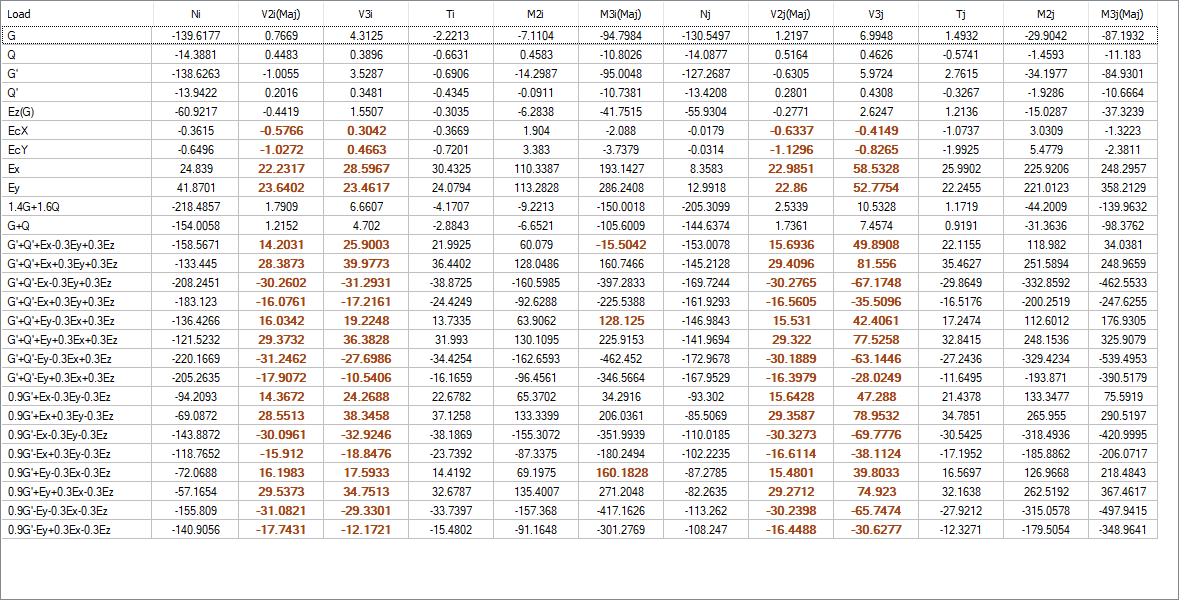 Load: The name of the respective load or load combinations. |
Design results  After the analysis, the regulation conditions have been applied, therefore it shows the end forces that have undergone changes and going to the design. In addition, the values used are shown in bold. End forces are values calculated on the element local axes. |
Raw results  After analysis, it shows the raw end forces that are not applied to the regulation conditions. End forces are effects on the element local axes. |
Global results  After the analysis, these are the values in global coordinates of the extreme forces that are not applied regulation conditions. |
Show individual results  For 4 modal analysis cases, 4 different results are obtained from each earthquake loaded combination. If you want the program to display the values obtained for each modal state one by one, you should check this option. |
Show maximums  The biggest values of 4 different results obtained from each load combination for 4 different modal cases are shown in the table. |
Next Topic
